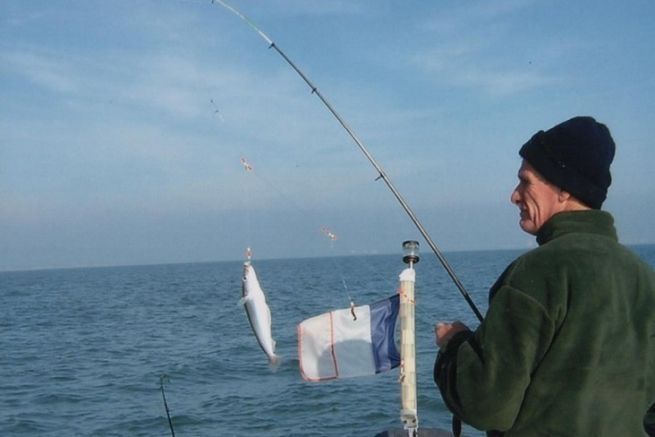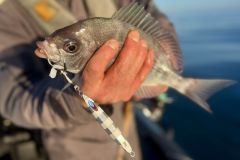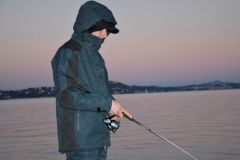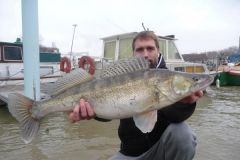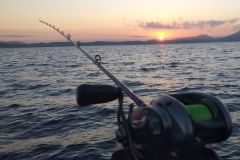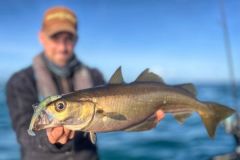Whiting, a winter fish
Belonging to the gadidae family, the whiting (merlangius merlangus) measures from 30 to 75 cm. Its coloration varies from yellowish brown, green or dark blue, its flanks are white, yellow and its belly is silver. At the base of the pectoral fins, there is a small brown to black spot. Whiting is gregarious and evolves in cold waters from November to March before leaving to reproduce in the North Sea and in the Channel. Its legal size is 27 cm, it is then only 3 years old, which is not much knowing that it can live approximately 20 years.
Where and how to fish for whiting
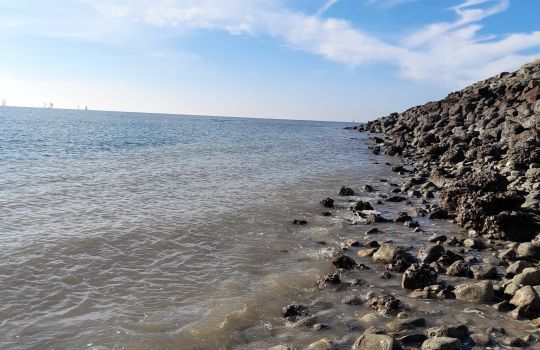
Whiting can be found on very specific sites from 10 to 25 m of depth on average and up to 50 m without problems. They are found on sandy-muddy bottoms or in the immediate vicinity of rock heads and preferably on irregular bottoms. The small successive dunes are real magnets for whiting during this period before the spring species take over on these funds rich in food. The full moon and the cold weather favor the approach of the fish to the coast. They are always fished above the bottom with the mounts off the ground, never on the bottom.
From the shore, whiting is fished by surfcasting with rods of 4.20 m and 5 m and 100 to 200 grams of power from the beaches, dykes and riprap. In boat, short and strong rods will be necessary. With a length of 2,50 m maximum for a power going to 300 grams. The echo sounder will help you a lot to locate the spots as well as the schools of fish. If you find a school of whiting, you're sure to hit the jackpot. As soon as your boat is well positioned and the fish are present, there is no need to put on a strouille.
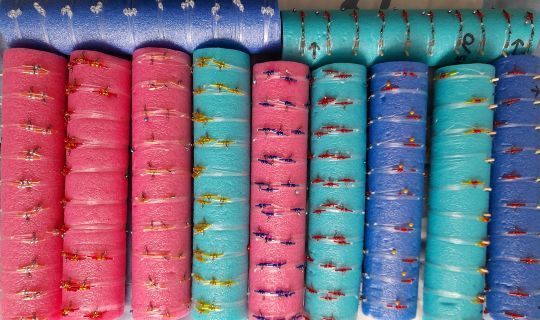
In both cases, plan several rigs to cope with the often erosive bottom and the long and sharp teeth of the crappie. Curious fish, red and phosphorescent beads will be added in front of the hooks to act as teasers. The touch is frank and brutal, but the rise of the fish is done without problems, because it opposes only little resistance. Very often, you will reel them in two or three times because the fish are so abundant and voracious. A pair of pliers will be necessary to unhook them without damaging them in order to put them back in their element and especially to avoid cuts to the fingers.
A variety of baits
A chance for us, the whiting are opportunists and also formidable hunters which is a good omen for our choice of baits. For their menu, we will alternate between sardines, mackerels, tube worms, cuttlefish, shellfish, but also small green crabs or squids. They sometimes deeply engament the proposed bait. Always plan a wide range of baits to see what they prefer the most on the day of your fishing, which can vary over the hours depending on the strength of the currents and the time of the tide.

 /
/ 